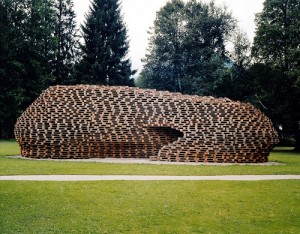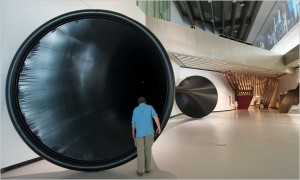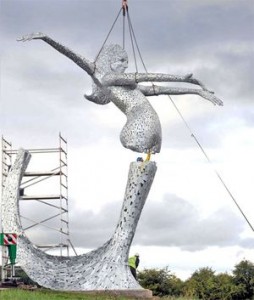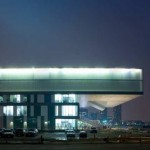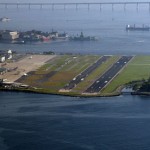“Eilert Sundt must have had a busy, happy week. As the president of the Norwegian Cartozoological Society, Mr Sundt probably is the world’s most prominent ambassador of the obscure discipline of cartozoology. This unlikely cross-breed of cartography, zoology and urban planning got a huge boost last week, when the government of South Sudan announced plans to remodel its 10 state capitals in the shapes of animals and fruit. Under the proposal, the regional capital Juba would be laid out as a rhinoceros. Wau, capital of Bahr el-Ghazal state and South Sudan’s second city, is to be restyled as a giraffe. A third one would be transformed into a pineapple. The other state capitals would also be remodelled to look like the flora or fauna in their state emblems. “Finally, finally, the world is starting to see things my way,” Mr Sundt must have exulted. But being the conscientious Scandinavian he doubtlessly is, his triumphant newsletter contained a caveat: “It pains us to say it, but even if the idea is beautiful, we are afraid that the [South] Sudanese authorities haven’t got their priorities straight.”
Read More: Animal, Vegetal, Municipal: South Sudan’s Zoomorphic Cities
“The Palettenpavillon by Matthias Loebermann is a structure made entirely from shipping pallets, ground anchors, and tie rods. Designed to be easily assembled and dismantled, and then entirely recycled at a later date, the resulting building is intended as a temporary meeting place. As the architect writes, the shipping pallets are “characterized by a complex geometry of open and closed surface portions,” with the effect that a staggered stacking of each unit produces “interesting netlike structures.” They add that the deceptively curvilinear form becomes a “cave.” The unexpected modular reuse of everyday materials is nothing new in architecture—seemingly every term in architecture school brings with it experiments in the tiling of things like cable ties, styrofoam cups, plastic water bottles, and so on—but the spatially dramatic effects of this particular experiment in large-scale, off-kilter pallet-stacking are worth seeing. In fact, a kind of micro-village of equally fluid forms built entirely from pallets would be fascinating to see…”
Read More: Pallet House
“Rome — The Eternal City is anything but. Collapses this spring at a couple of ancient sites here caused weary archaeologists to warn, yet again, about other imminent calamities threatening Rome’s precarious architectural birthright. Meanwhile, the smart set went gaga when an ostentatious national museum for contemporary art, Maxxi, opened recently, along with an expansion to the city-run new-art museum, Macro. That was just after Rome’s mayor, Gianni Alemanno, convened a conference for planners and architects to mull a bid for the 2020 Olympics as an incentive to update Italy’s capital. Contemporary architecture now promises to be the engine and symbol of a new creative identity for Rome that, if development is done right for a change, would complement the city’s glorious past. “What does Rome want to be when it grows up?” is how Richard Burdett, a planner from London with Italian roots, put the situation the other day. He meant the situation of Rome at a crossroads, struggling ahead, falling behind…”
Read More: As Rome Modernizes, Its Past Quietly Crumbles
“The post-war politicians, planners and architects who built Cumbernauld had a utopian vision: for future generations to create a happier, more gracious life away from the filthy tenements and sectarianism of decaying Glasgow. And in the 1960s and early 1970s the people answered their call, relocating in their thousands to enjoy the wide open spaces, plentiful jobs and modern homes. Recent history however has proved a cruel judge of that dream and the Lanarkshire new town has found itself one of the most reviled places in Britain. The home of the UK’s first shopping mall has been named Scotland’s most dismal place and likened to Kabul. In 2005 the shopping complex was nominated by the public for destruction as part of Channel 4’s Demolition series. But Cumbernauld is fighting back. Yesterday, a vast galvanised steel woman named Arria was erected in the sporadic sunshine at a hillside cemetery. It is hoped she will be a symbol of change for the town. Created by the Scottish artist Andy Scott, whose works include the celebrated Heavy Horse on Glasgow’s M8 and the Thanksgiving Square Beacon in Belfast, the 33ft female figure, with a retro hairstyle suggestive of the town’s 1960s new arrivals, will be seen by 70,000 motorists on the A80 each day…”
Read More: Can public art really revive the most dismal place in Scotland?
“Elizabeth Diller and Ricardo Scofidio, whose architectural firm Diller Scofidio + Renfro was announced Monday as designers of the Broad Collection building planned for Grand Avenue in downtown Los Angeles, are artists as well as architects. “Scanning: The Aberrant Architectures of Diller + Scofidio,” a 2003 survey of their work at New York’s Whitney Museum of American Art, featured a section devoted to architectural models (they hadn’t yet actually built much). But most of the show presented architecturally related sculpture and site-specific installation art — primarily notable for how old-fashioned it was. A disappointing centerpiece, “Mural,” was a robotic drill mounted on tracks that ran through the galleries. Whirring and buzzing, the drill would slide along the tracks, stop at random (or according to some unidentified program) and then bore into the gallery drywall, like R2D2 on a bender. A trail of holes peppering the walls left evidence of past movements…”
Read More: Broad Collection’s Diller and Scofidio are artist-architects
“Most airports are in denial, or at least their architects are. They think they’re works of transport engineering, when really they’re shopping malls with a transport function attached – BAA is said to make more money out of retail than flights. Barcelona’s Terminal 2, completed in 1991, makes a virtue of this fact. It treats the airport as an unusual kind of city, with broad urbane avenues, highly polished purplish marble, big glass walls, dignified concrete and ample proportions. As a result it is much more relaxing than airports where you feel like a piece of baggage on its way to the carousel. Its architect, Ricardo Bofill, has recently also completed the rebuilt Terminal 1…”

